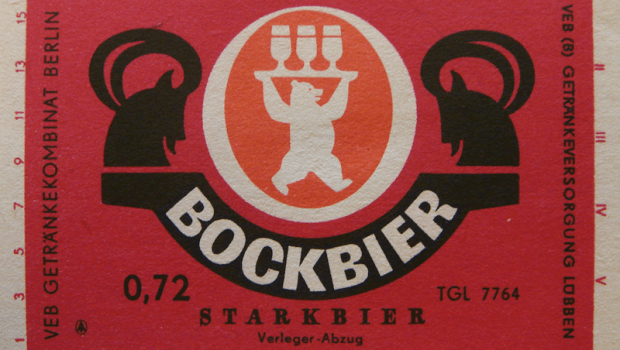
Bockbier or Bock Beer is a classic German beer which is known to be the richest, malty yet velvety brews on earth. The beer which is full of flavor is served when people need to warm their bodies in winter chills and spring time. The high seasonal beer has a thicker mash as the water content is low. This age-old German drink nourishes and warms up the body beating the bone-chilling atmosphere. Just like barley wines, Bockbiers must be savored and not gobbled up.
There are various types of Bock beers having a typical color and strength which fluctuates according to the pattern of the climate. When the spine-chilling winter arrives in the late December days where people are busy with Christmas celebrations, something warmer revitalizes the body to continue the Christmas celebration with the same enthusiasm. Weihnachtsstarkbier, a Christmas Bockbier is the darker version of a regular bock, comes to the rescue. The beer is quite famous in South Germany. The drink also gets the chocolaty taste due to roasted malts which give the taste buds a soothing flavor. When the cold is feeble during February-March, the Doppelbock is made. By the end of the spring, the bock bier is seen in the lighter shade, but it’s still a Bock when questioned about its’ strength.
The making of beer, especially the brewing part is the process which is the ‘no-haste’ zone and the most critical stage in its making. The brewing may take weeks, even months to bring out the matured radiance in the beer. Bock beer brewing initiation means welcoming the New Year in the German Beer brewing industry, which falls on October 1. The harvested malt and hops are brought fresh and no time is wasted in the Bavarian land, where most of the brewers are settled.
Looking behind.
The birth of the beer was in the 17th century, in Munich, Bavaria. However, it goes way back in the 13th century and not in Munich, but in Finback- Northern Germany. The beer was being sent away beyond the reach of the city. Some of the beer was to the Dukes of Bavaria, who grew fond of the beer but thought was pricey because of heavy taxes. Duke William V then made the decision on the self-brewery and recreated the same taste of the beer.
There are numerous stories like those regarding the origin, type, color and taste of the beer along with its name. Now, with Bockbier name is celebrated as the season of harvest grows.
Recipe:
The recipe of Bockbier is tad lengthy process and requires a lot of patience and will. But once it is made, you will delve into it, and it will be worth your time! So enjoy making the best of it and savor it sitting by the fireplace with friends and family in the cold weather!
It makes approximately 18 liters of Bockbier.
Ingredients:
The grains which are required:
- 4 kg Pilsner (out of which 1 kg of Pilsner is roasted at 175 degree Celsius for 15 minutes)
- 2 kg Munich Dark
Homebrew/ Hopping Schedule:
- 1 oz. Holledau Tradition, 5.8% alpha, 1 hour.
- 25 oz. Holledau Tradition5.8% alpha, 20 minutes.
- 25 oz. Tettnanger, 3.8% alpha, 20 minutes.
Technical specifications:
Type of yeast: Wyeast, Bavarian (W2206)
Alcohol concentration: 6.7-8.5% by Volume.
Acid rest: 35 degree Celsius.
Protein rest: 50 degree Celsius.
Conversion rest: 69 degree Celsius.
Mash out: 77 degree Celsius.
Procedure for Mashing:
Take approximately 13 liters of water at 37 degree Celsius to hit the initial strike of temperature from 35. Allow it to heat for about 15 minutes. After 15 minutes, take about 40% mash in a separate container, put it on the flame and let it leave out as much liquid as possible. The temperature should regularly be checked during the rest of the mash decoration.
The First Phase Decoration:
Now, after the mashing, increase the temperature of the mash by about 1/15 degree Celsius per minute until the temperature reaches 68 degree Celsius. Hold for 5 minutes and then boil for another 30 minutes at the same temperature and don’t forget to stir constantly. Now, shift the mash in 2 different bowls until it rests on the striking temperature that is 50 degree Celsius. Stir it again into the paste and let it rest for another 15 minutes and then advance to second phase decoration.
The Second Phase Decoration:
Now repeat and draw 4% of the mash and let it leave behind as much as liquid as possible. Raise the heat again by 1/15th degree Celsius for the next 5 minutes. Now raise the temperature quickly into the boiling state and let it boil for the next 30 minutes. Keep constantly stirring for another 15 minutes until it cools off to 68 degrees and then again stir it into the mash and proceed further.
The Third phase Decoration
In this phase, rather than boiling the thick paste part, boil the liquid part of the mash instead. Draw the 20-30% of the liquid and bring it to boil rapidly. Let it be boiled for the next 30 minutes.
Test the rest mash for its conversion with iodine and now, the boiling part of the mash will take place. Now add the black liquid and let it bring to the temperature of 77 degree Celsius. Let the remaining liquid rest aside until it cools down and then stir it again with the mash.
The reason why the boiling of liquid is required is:
- The sugar is present in the fluid, thus boiling, the sugar will be rich in malt and the caramelized color will be formed which also give an excellent will texture to Bockbier.
- And we are not considering the preservation of enzyme amylase because the conversion is now done and we can knock them out. In this way, the dextrins will contribute to body and head detention is not further convertible to fermentable sugar which will now develop into beer.
Now, let mash rest for further 10 minutes and transfer it to another container and completely stir it all together.
Boil the wort for another 1-1/2 hour as per the scheduling hops, Save 2 quarts for the next use of priming the beer.
Let the remaining wort chill and then pitch the yeast. Transfer it in the refrigerator for at least 5-6 hours after pitching and fermenting it for a week or two.
After this, enjoy it with your friends and families for the rest of the winter!
